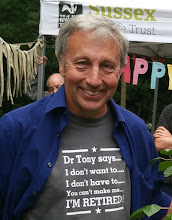Well the 20th anniversary of the storm has now passed and there have been numerous television, radio and newspaper articles on the subject. But how much have we learned in two decades?
In some respects understanding seems to have moved on quite well. People should now realise that, from the perspective of nature, the storm was a good thing. Surely there is no need to go over the argument yet again (more openings in the woods, more light into previously dark woodland, more diversity, more tree, shrub and flower regeneration, more rotting wood, more living space for wildlife like insects, birds, plants fungi and so on).
Leave the wood alone after the storm and it will regenerate quite naturally and will generally be better as a result.
Furthermore, hopefully most people realise that storms are not only a good thing for nature, but are also quite normal – a storm every century or two is quite frequent in the life of a wood.
Nevertheless, I still hear people talking about a wood “recovering” from the “damage” caused by the storm. This is the wrong perspective. Storms are not damage they are natural disturbance! And it is this natural disturbance that is a good thing.
Move on from there and there are several more lessons that we should learn:
Storms disturb woods in a similar way that traditional management does (i.e. cutting small clearings and allowing natural regeneration). Conservationists have been saying for many decades that good management of woods is good for wildlife. Why? Because management is like natural disturbance.
Storms in woods are not an argument against management – instead storms provide the rationale for why management is so good for wildlife.
Perhaps a surprising lesson from the storm is a view that storms alone do not cause enough disturbance to create the conditions for all our native wildlife!
When I monitored woods after the storm I thought that this was how natural English woods get the open unwooded areas that are needed by all our species that like open habitat. Not so. 20 years later practically all the openings caused by the storm have disappeared. It is clear that other forms of disturbance are also vital to create the natural diversity needed by our wildlife. Disturbances like:
- Floods Soil slippage and erosion
- Accretion
- Insect and fungal attacks
- The grazing and browsing of large animals.
It is the last one here, grazing and browsing by large animals that we have perhaps underestimated in the past. Today most of our habitats are (or should be) grazed by animals – usually domestic animals. We often think this is not natural, something imposed by man, because we use domestic animals. In fact, however, these domestic animals are doing the same ecological job that wild grazers might have done in the distant past. Removing them from the forest and leaving a wood to grow tall and dark, may actually be less natural than including low intensity grazing within a forest. Thus most people’s view of “leaving things to nature” is actually incorrect, as we have already excluded too much nature.
The next lesson of the storm is therefore that we have to include more forms natural disturbance in our understanding of how nature works. When we do so this explains how we get our meadows, grassland, wetlands, heaths, pastures and so on.
In my view, however, the most important lesson of the storm is how we relate to nature. Many of us seem to feel that humans are in total control. We have beaten nature, we set the targets we want, allow things where we want them to be and that nature, generally, is just a green back-cloth against which “real life” is played.
This is not an attack of farmers, foresters or developers, but is just as true of conservationists themselves. The current trend of setting our conservation targets and then implementing management towards them sounds very business-like, and can deliver a great deal – but it’s not very natural! It implies a control and a superiority over nature that we don’t have.
The storm was a gentle reminder that we need to understand nature and work with it. It was a humbling event, outside our control and impacting heavily upon us. Yet it was good for nature. Instead of imagining we can dominate, crush or control nature, perhaps we should spend more time trying to understand nature and nature’s laws, work with it, maybe repairing natural systems that we ourselves have damaged, where possible encourage it to work better.
We should think less about the targets that we want achieved and more about enabling ecological processes like natural disturbance to function better.

No comments:
Post a Comment